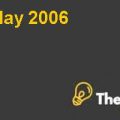Summary
The case introduces Bajaj Autos, selling scooters since 1945 and engaged in the manufacture, production and distribution of Scooters among the customers, in India since 1959. It can be assessed that, the company had significantly enhanced its revenue stream through strategically positioning its products in the market, which increased its appeal and result in raising their number of units sold. Furthermore, it can be evaluated that, it tried to engage the motorcycle segment through the collaboration with Kawasaki, after experiencing a steep decline in the sales of its scooters. It planned to develop and introduce 125cc motor bike to the people of India. However, it was assessed that, Bajaj faced stiff competition from various competitors operating in the market. Which included big names like Hero Honda in the two-wheeler segment, who was recognized as an India’s leading motorcycle manufacturer. Hero Honda had gained its customers trust and loyalty. This, in turn, allowed them to maintain and sustain their growth prospect, while gaining and maintaining significant share of the market. Additionally, it can be determined that, Bajaj had seen tremendous growth in the past through the sale of sir scooters to the customer available in the market. The customer’s prospective had changed in which, they regarded Motorcycles as being more stylish, powerful and economical, then compared to scooter. Therefore, the customer trend had shifted to motorcycles instead of Scooter. Which had compelled Bajaj management to reconsider its product stance and position. Hence, the management of the company decided to develop 125cc motorcycles to target the customers changing attitudes regarding light weight and economical bikes. On the other hand, TVS Motors was a major player in the two wheeler market and a Stern competitor of Bajaj, joined with Suzuki motors to develop 125cc motorcycles, after seeing the success of its prior launches in the market. This enabled the TVS to secure sufficient share of the market and ensured its long-term survival in the market. Therefore, it can be determined that, Bajaj’s management needed to develop efficient and effective strategies that would ensure its long-term survival in the market. Moreover, enable the company to sustain its growth prospect and protect its market share from competitors present in the highly diverse and competitive Two-wheeler motorbike market.
Bajaj Autos Harvard Case Solution & Analysis
Industrial Backgrounds
After analyzing the case and inspecting the historic and present condition of the two-wheeler motor cycle market, it can be determined that, the purchasing power of the customers was low in India. It compelled the consumers to purchase bikes, who could not afford cars. Furthermore, it was the most appealing market, in relation to 75cc and 125cc motorcycles,from which, the customers were able to purchase these bikes, attributed to their light weight and high fuel economy. Therefore, the motorcycle manufacturing companies spent heavily on their research and development projects. Which enabled them to develop innovative products, which would meet the changing requirements of the customers available in the market. Furthermore, it was assessed that, initially, the companies developed heavy weigh motorcycles ranging from 150cc to 350cc, which were costly to manufacture and were less fuel efficient......................
This is just a sample partical work. Please place the order on the website to get your own originally done case solution.













